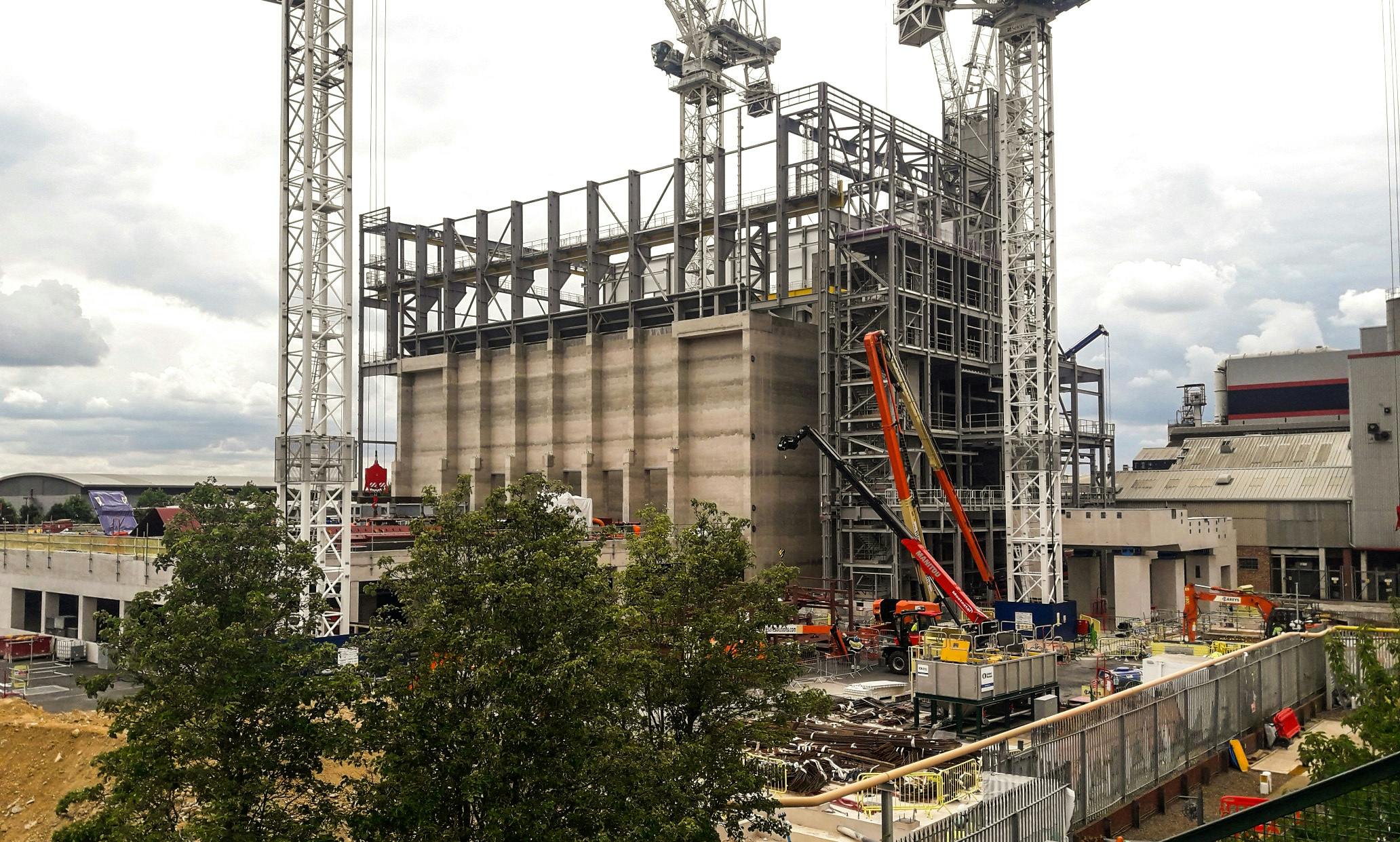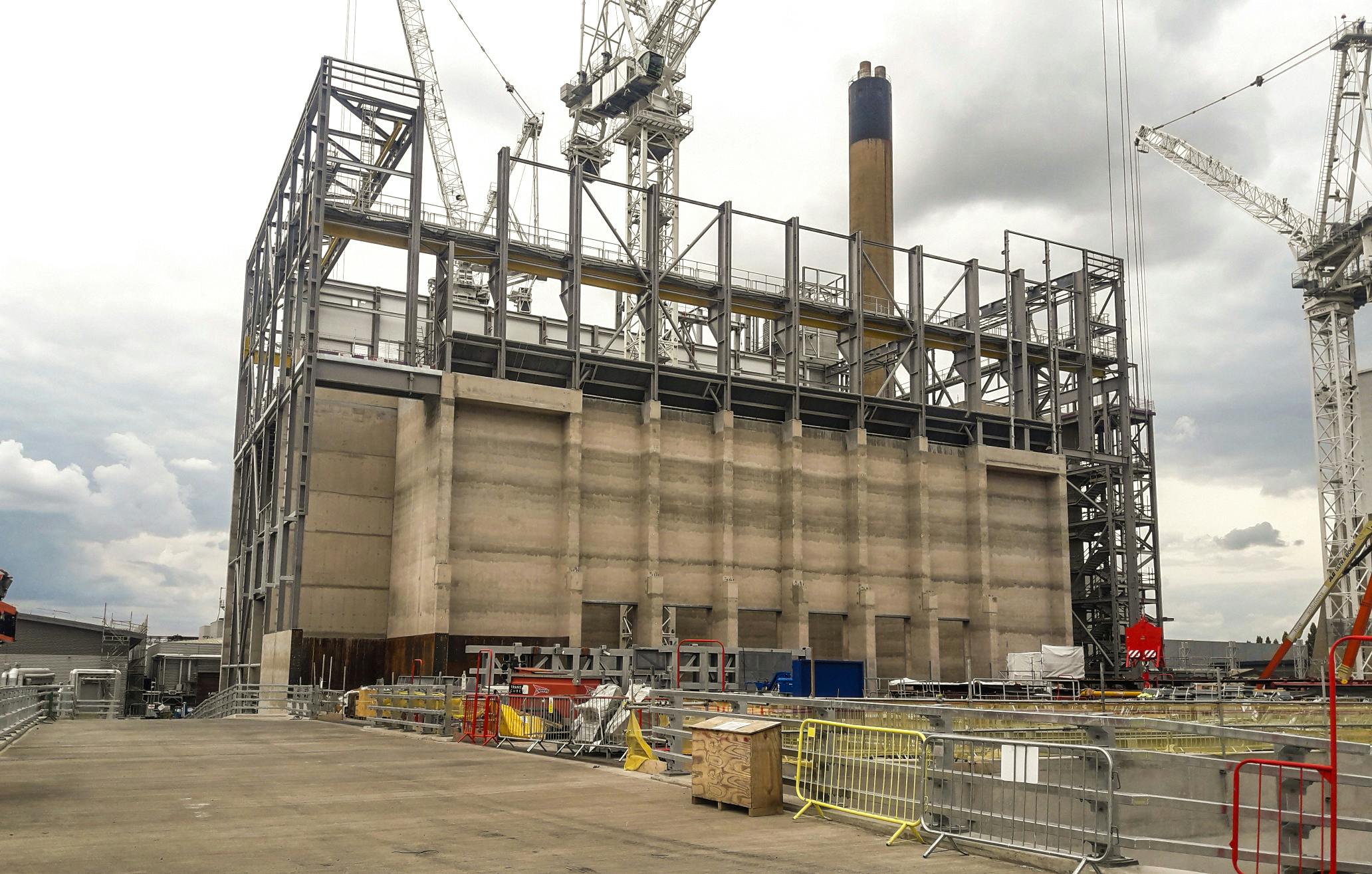
Slough Multifuel
Careys have been involved in the construction of a new energy from waste (EfW) plant, Slough Multifuel for client Scottish and Southern Energy (SSE). This important project aims to significantly reduce the volume of waste being sent to landfill and will generate around 49.9 MW of electricity per year to power local homes.
Client
Scottish and Southern Energy (SSE)Location
SloughPrincipal Contractor
Hitachi Zosen InovaThis important project aims to significantly reduce the volume of waste being sent to landfill and will generate around 49.9 MW of electricity per year to power local homes.
The Main Civils works packages include:
Temporary works/logistics – our scope of works includes drainage and de-watering of lay-down areas until handover, dewatering inside the waste bunker, dust suppression to all areas of site, wheel washing and cleaning equipment, road sweeping, storm water and snow clearance, RC bases for temporary substations and distribution boards.
Earthworks – this includes backfill to waste bunker and ground bearing slabs (load transfer platforms), preparation of laydown and preassembly areas, road and ramp formation, breaking down CMC piles for deep bases and pits only. Majority of CMC breakdown is done by others.
Utilities and roads – this includes interceptors and attenuation tanks, fire water storage tanks, firemain (external), potable water supply, construction stage and permanent electrical and comms ducting, drainage, earthing installation, car parks and access ramp surfacing and permanent fencing.
Concrete and structures – our scope of works includes blinding concrete (ex. waste bunker), tipping hall RC works (plinths, walls, slabs and precast), tower crane bases, waste bunker slab and slip formed walls, RC hopper decks, boiler house RC slab, boiler house core, flue gas RC slab and pits, future stack RC foundation, turbine hall RC slab and bunkers, RC bases to other features, ramp including retaining structure, piers, precast beams and RC deck, along with elements of precast cladding.

Slough Multifuel will play a key role in the UK’s sustainable waste management

Slough Multifuel will play a key role in the UK’s sustainable waste management
The main bulk of the concrete works our team conducted throughout the project was the construction of the 30m high bunker which will store the waste upon completion in September 2022. To construct the waste bunker, we used a cost- and resource-effective slipform methodology (assembled at level -2m and slipped from here to a height of +28m), with a continuous pour which took place over the course of two weeks.
This methodology enabled us to successfully build the huge structure, with its internal measurements of 22m x 44m, in only 14 days.
In total 4,350m3 of concrete was used to form the waste bunker, where the 120 strong team worked in shifts 24/7.
The work began in July 2021 on an initial 12-month contract that was extended due to unforeseen issues with contaminated water and groundwork that needed to be removed.
In keeping with our dedication to protect the environment and minimise disruption to site surroundings, we implemented a close monitoring system during ground compaction works. This also kept us fully compliant with the project’s strict noise and vibration parameters.
After going into full commercial operation, expected in 2024, the plant will process around 480,000 tonnes per year of mainly commercial waste from the Greater London Area, and generate around 49.9 MW of electricity that will be fed into the National Grid. Additionally, up to 23 tonnes of processed steam per hour will be delivered to a nearby food factory. When completed, Slough Multifuel will play a key role in the UK’s sustainable waste management, diverting thousands of tonnes of waste away from landfill, and instead converting it into a valuable source of energy with any leftover bi-product to be reused as fertiliser. Slough Multifuel is the latest project being added to our continuing portfolio of EfW projects including Millerhill, Lostock and Ferrybridge.
Slipform waste bunker construction
The main bulk of the concrete works our team conducted throughout the project was the construction of the 30m high bunker which will store the waste.
A decision was made early in the process to use a cost- and resource-effective methodology to reduce the amount of construction joints in the walls of the waste bunker and ensure a watertight structure. It was also essential to make the bunker resistant to chemical attack, so the concrete needed to be DC-3 class compliant.
This slipform methodology (assembled at level -2m and slipped from here to a height of +28m) enabled us to successfully build the huge structure, with a continuous pour which took place over the course of 2 weeks. In total 4,350m3 of concrete was used to form the waste bunker, where the 120 strong team worked in shifts 24/7. The work began in July 2021 on an initial 12 month contract that was extended due to unforeseen issues with contaminated water and groundwork that needed to be removed.
In keeping with our dedication to protect the environment and minimize disruption to site surroundings, we implemented a close monitoring system during ground compaction works. This also kept us fully compliant with the project's strict noise and vibration parameters.
Low carbon concrete
Aggregate Industries subsidiary London Concrete was brought in to assist Careys and GB Slipform in the delivery of the 24/7 concrete supply for the bunker slipform construction. Aggregate Industries' low carbon concrete, ECOPact Prime, was specified to deliver the work-ability performance needed for a slipform of this size while meeting the challenge set to reduce the embodied carbon of concrete.
ECOPact Prime has higher blends of cement substitutes such as ground granulated blast-furnace slag (GGBS) and presented challenges for slipforming when it came to setting times and compressive strengths.
In conjunction with London Concrete, trials were carried out over a two week period at their Heathrow plant, followed by frequent batch testing and 24/7 supervision during the pour, which ensured that the mix design delivered optimum performance while also maintaining the sustainability credentials of the build using a low carbon concrete.
This resulted in the delivery of a 42% reduction in embodied carbon compared to the original concrete mix design specified. This equated to a saving of 609 tCO2e.
We'd love to hear from you, so please get in touch